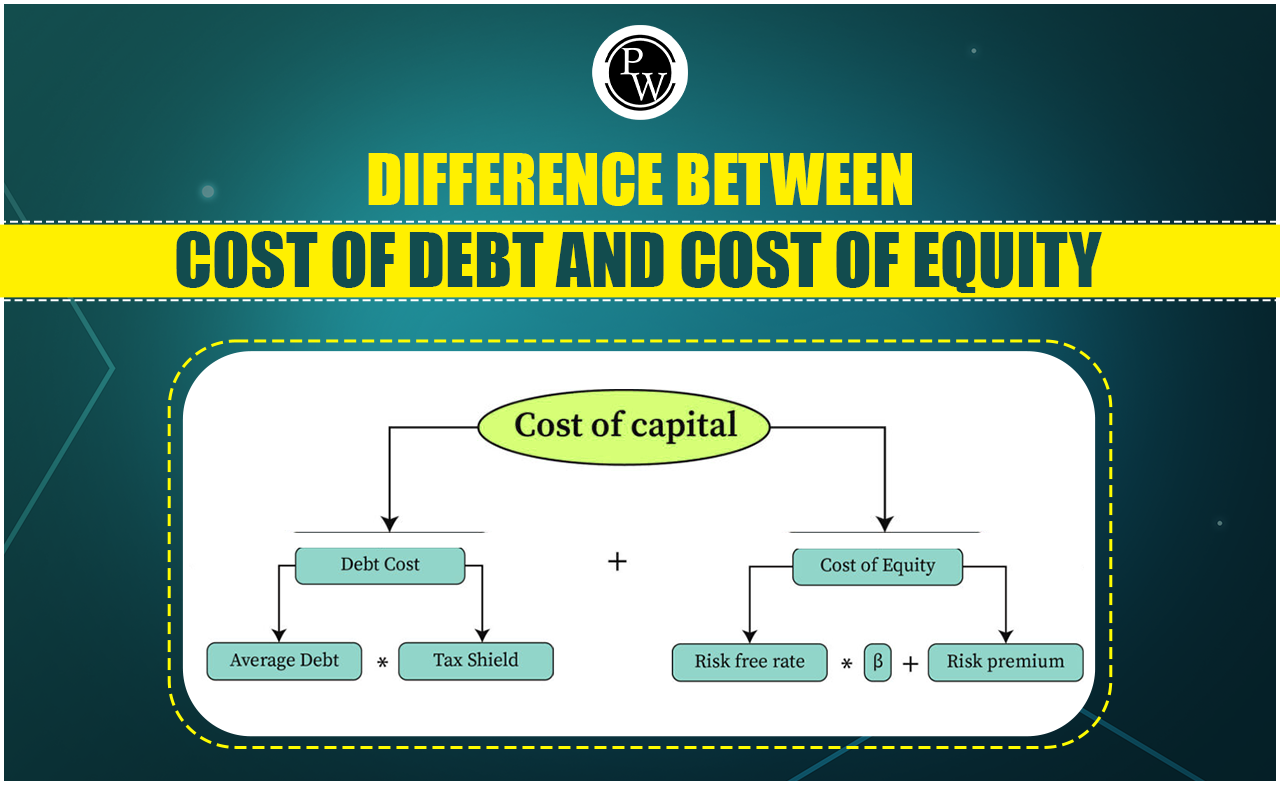

Cost of Debt and Cost of Equity: In corporate finance, understanding the cost of capital is crucial for making informed financial decisions. Capital structure is debt, and equity are the two primary components of a company. The cost of debt and equity represents the returns lenders and shareholders expect when investing in a company. While both are essential for funding operations and growth, they differ significantly in calculation, risk, and impact on a company's financial health. This article delves into the fundamental differences between Cost of Debt and Equity.
What is the Cost Of Debt?
The cost of capital includes debt and equity, with the cost of debt representing the interest a company pays on its borrowings and liabilities. For example, if a company has a total debt of $1,000 and an annual interest expense of $100, the cost of debt would be 10%. To calculate the cost of debt, a company must determine the total annual interest expense and divide this amount by its total debt. This calculation reveals the cost of debt, which is heavily influenced by observable interest rates. The cost of debt is not just a number on a balance sheet. It is a key indicator of a company's default risk and reflects the current market interest rates. More importantly, it's a crucial component in the complex calculation of a company's Weighted Average Cost of Capital (WACC).What is the Cost Of Equity?
A company's cost of equity represents the return that financial markets require as compensation for owning the asset and taking on the associated risks. One method to estimate the cost of equity is the Capital Asset Pricing Model (CAPM). This involves three steps: first, multiply the company's beta by the market risk premium; second, add that value to the risk-free rate; and third, this calculation theoretically approximates the required rate of return based on the asset's risk. Another traditional method for calculating the cost of equity is the dividend capitalisation model. In this approach, the cost of equity is determined by dividing the dividends per share by the current stock price and then adding the dividend growth rate. ERi=Rf+Bi (ERm−Rf)- ERi=Expected returns of the investment
- Rf=Risk-free rate
- Bi=Beta of the investment
- ERm−Rf=Market risk premium
Difference Between Cost of Debt and Cost of Equity
Understanding the difference between the cost of debt and equity is vital for any business aiming to optimise its financial strategy. The cost of debt is the effective rate that a company pays on its borrowed funds, while the cost of equity is the return that investors expect for their investment in the company’s shares. Both components play a crucial role in a company’s capital structure and influence the overall cost of capital, impacting investment decisions and financial planning. Below is a comparison of the key differences between the cost of debt and equity.
| Difference Between Cost of Debt and Cost of Equity | ||
| Features | Cost of Debt | Cost of Equity |
| Nature of Financing | Interest expense on borrowings | The return required by equity investors |
| Calculation | After-tax Cost of Debt=Interest Rate×(1−Tax Rate) | CAPM: 𝑟𝑒=𝑅𝑓+𝛽(𝑅𝑚−𝑅𝑓) Dividend Model: 𝑟𝑒=(𝐷1𝑃0)+𝑔 |
| Risk | Less risky, priority in liquidation | More risky, last in liquidation |
| Tax Implications | Interest is tax-deductible | Dividends are not tax-deductible |
| Basis of Calculation | No models, primarily tax-related | Typically calculated using models like CAPM |
| Interest Implications | Interest payments are required as resources are borrowed | No interest payments required |
| Rate of Return | Rate of return expected by debt holders or bondholders | Rate of return demanded by equity investors |
| Impact on Financial Structure | Increases leverage and financial risk | Does not increase leverage, may dilute ownership |
| Market Conditions | Influenced by interest rates, credit rating | Influenced by performance, growth, and market conditions |
| Definition | Interest paid on borrowings held by debt holders | Rate of return expected by equity investors/shareholders |
| Fixed vs. Variable | Fixed cost | Variable cost depending on performance |
Begin your journey towards academic excellence in Commerce with our comprehensive Class 11 Commerce courses . Master the CBSE syllabus with expert guidance and ace your exams. Enroll now!”
Difference Between Cost of Debt and Cost of Equity FAQs
What is the cost of equity?
Why is the cost of debt usually lower than the cost of equity?
How do tax implications differ between debt and equity?












